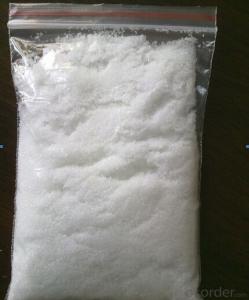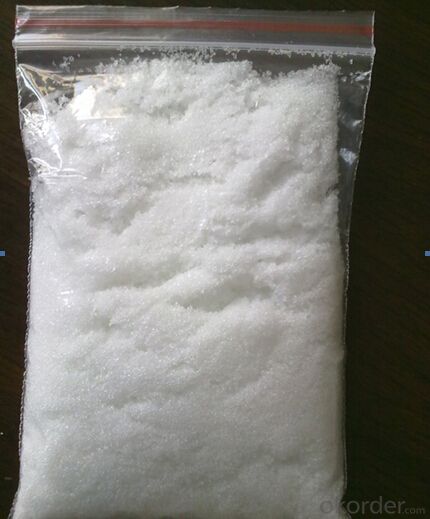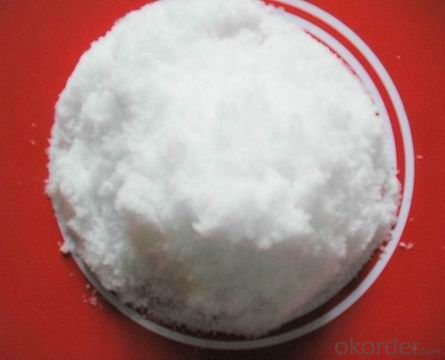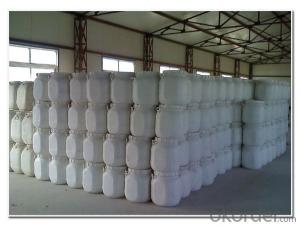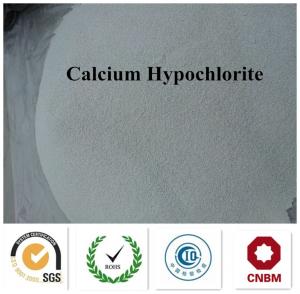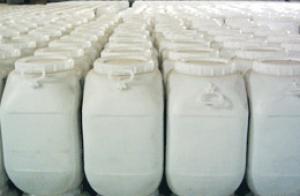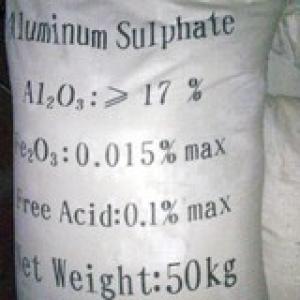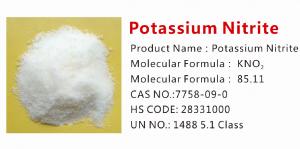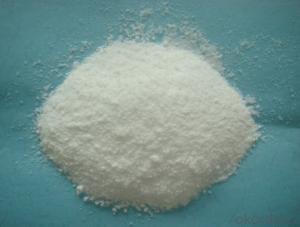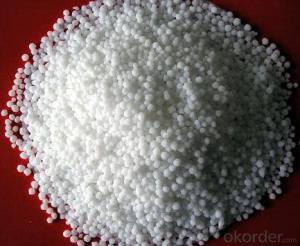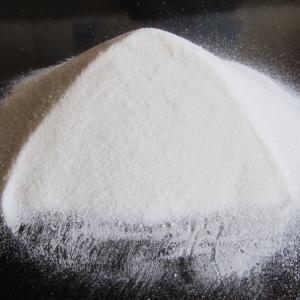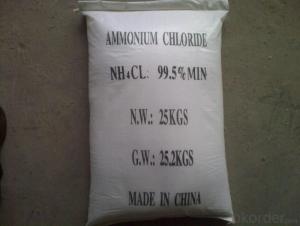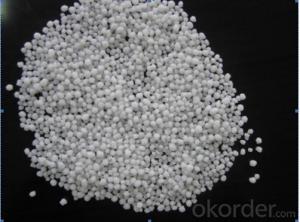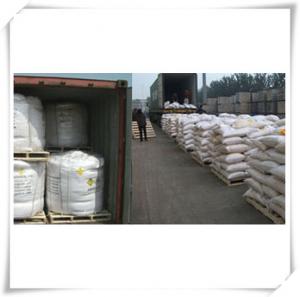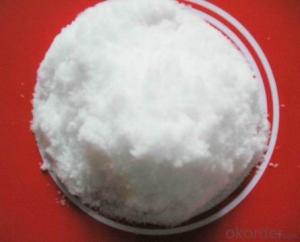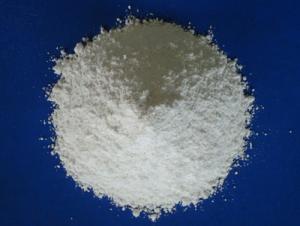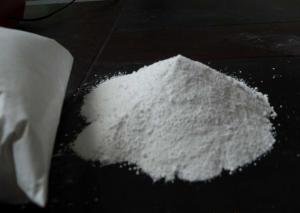Magnesium Nitrate Magnesium Salt Construction Chemical
- Loading Port:
- China main port
- Payment Terms:
- TT OR LC
- Min Order Qty:
- 1000 kg
- Supply Capability:
- 500000 kg/month
OKorder Service Pledge
OKorder Financial Service
You Might Also Like
Magnesium Nitrate Magnesium Salt Construction Chemical
Technical standard: HG3-1077-77
Molecular formula: Mg(NO3)2·6H2O
Molecular weight: 256.41

Properties:
This product is colorless crystal or white flake.Well soluble in water, liquid ammonia,
methanol and ethanol. Stable at roomtemperature. Relative density 1.461. It will dehydrate and generate alkaline magnesium
nitrat at the temperature higher than melting point for 95℃. Itbegins to decompose
at 300℃ and completely decomposed to magnesium oxide andnitrogen oxide gas at above 400℃. It is a
kind of all nitrate nitrogenfertilizer to supply magnesium. This product can be used for quick supplement
of nitrogen and magnesium for crops. It is conducive to crop growth and canincrease yield and quality.
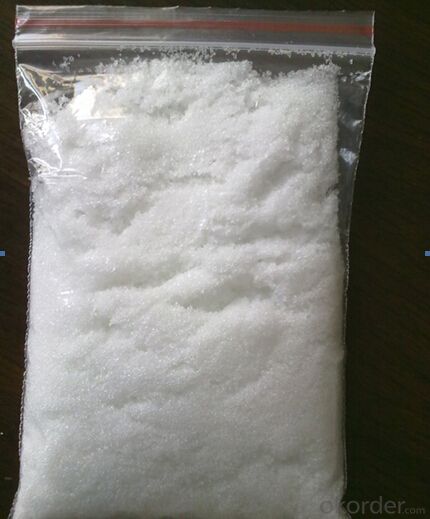
Use:
Suitable for a variety of fruits, vegetables, peanutsand other cash crops, greenhouse crops, field
crops, flowers, etc. It can usedrip irrigation or spraying on leaf. In industry, it is used as
concentratednitric acid dehydrating agent, the raw material to produce explosive, catalystand other
magnesium salts, wheat ash agent, etc.
Packing:
25/50KG woven bag lined with plastic bag or according to customerrequirements.
Main indicators | Unit | Industrial grade | Agricultural grade |
Magnesium nitrate | %≥ | 98.0 | 98.0 |
Heavy metal | %≤ | 0.002 | 0.002 |
Water insoluble | %≤ | 0.05 | 0.05 |
Iron (Fe) | %≤ | 0.001 | 0.001 |
PH value | ≥ | 4 | 4 |
Nitrogen | %≥ | ------- | 10.7 |
Magnesium oxide | %≥ | -------- | 15 |
FAQ
1.Q: What is MOQ?
A: Our MOQ is 1 TON.
2.Q: Could you offer free sample?
A: We can provide free samples to you for quality testing.
3.Q: What about your packing?
A: For liquid: Flexitank, or IBC tank 1000L
For powder:Woven fabric bag with plastic film liner( 25kg or 1000kg)
Clients’ packing is workable.
4.Q: How about your productive capacity?
A: 150000 tons/Year.
5.Q: What is your delivery time?
A: Within 7 days after received deposit or L/C at sight.
- Q: What do we get from the milk?
- Incense is not it Well! After your girlfriend will be like the oh ..
- Q: Organic chemistry extraction lab. If the KBr wasn't there I would just add HCl to protonate the NH2, but I'm not sure if that will affect the KBr or the carbon chain. Both of these are in an aqueous phase.
- The amine will certainly coordinate to K+, but the interaction is not very strong and hydrogen bonding from water will compete efficiently. Also, if your amine is soluble in water, you are not going to be able to isolate it by turning it into the corresponding ammonium salt.
- Q: During the different periods of plant growth, the amount of water and inorganic salt required is different.
- Plant life, although the need for a variety of inorganic salts, but different plants on the various types of inorganic salt requirements are different, such as cabbage, spinach and other human needs leaves of vegetables need nitrogen containing inorganic salts, tomato, peanuts need phosphorus Of the inorganic salt and more, sweet potatoes, potatoes need potassium-containing inorganic salts; the same plant with the growth period of the different requirements of inorganic salts are not the same, for example, plants in the seedling period requires nitrogenous inorganic salts , In the flowering, the results of the period of time need more phosphorus-containing inorganic salts. Therefore, different plants and the same plant growth period, the need for inorganic salts are different. So the answer is: different; different
- Q: Why is the inorganic salt left after the burning of the food
- Food contains protein, fat, inorganic salts and water and other substances in the process of combustion in addition to inorganic salts and the rest of the water are burned, and water in the combustion process evaporates. So take the only inorganic salt.
- Q: By balancing the benefits of dietary supplementation with inorganic salts, what are the advantages and disadvantages of taking health care agents?
- Obviously, the advantages of taking health care agents are targeted, quick and effective; the disadvantage is to maintain the problem after the effect is like a hormone therapy, hormone therapy after the effect is very good, and physically strong after the virus may be recovered It is very effective, some poor physical is not the case. Poor physique, perhaps more suitable for "balanced dietary supplement".
- Q: Does the milk contain inorganic salts?
- Calcium, phosphorus, potassium .1L milk can provide 1g of calcium, and milk calcium and phosphorus ratio of 1.2: 1, close to human milk (human milk 1: 1), digestion and absorption rate, it can ensure that the baby's calcium Need milk milk in the very few, only 0.2mg / 100g, for the human milk 1/5, the baby, such as milk-based food feeding, the need to timely add iron and vitamin C foods such as egg yolk, liver mud, In addition, the milk also contains copper, zinc, manganese, iodine, molybdenum and other trace element
- Q: Cells in the water, inorganic salts, protein, lipid, carbohydrate and nucleic acid six words how wrong this sentence
- Plus a "so" on the right, because there are many other compounds in the cell
- Q: List the major electrolytes released by inorganic salts when placed in water and explain how these electrolytes are needed for metabolic reactions.
- Which "inorganic salts" are you talking about? There are hundreds!
- Q: The application of various inorganic salts in the human body?
- All tissues of the human body contain strontium, is also the main component of bone and teeth, mainly gathered in the ossification of the place, can be strong bones.
- Q: The power of the water and inorganic salts in the plant is derived from the action of the plant
- The transpiration of plants in the body of water in the form of water vapor into the atmosphere when it is a "pump" principle, it provides a vertical pull for the root of the water, while dissolved in the water in the same salt Is absorbed and transported upward, the power is derived from the transpiration of plants
Send your message to us
Magnesium Nitrate Magnesium Salt Construction Chemical
- Loading Port:
- China main port
- Payment Terms:
- TT OR LC
- Min Order Qty:
- 1000 kg
- Supply Capability:
- 500000 kg/month
OKorder Service Pledge
OKorder Financial Service
Similar products
Hot products
Hot Searches
Related keywords
